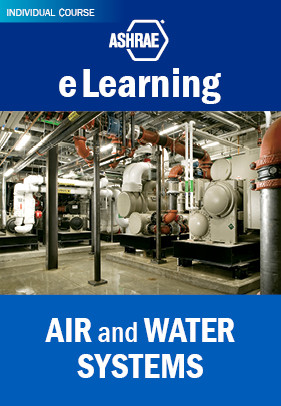Air-and-Water Systems (I-P), 2.0 PDHs (AIA)
 |
This course covers the applications, advantages, and disadvantages of air-and-water systems, as well as main component arrangement for maximum efficiency. (I-P), 2.0 PDHs. AIA approved. Training Level: Essentials Level I Non-Member Price: $60.99 |
Details
This course addresses the applications, advantages, and disadvantages of air-and-water systems. The arrangement of the main components to maximize the systems’ efficiency is explained. The course also discusses how primary air is cooled and sent to the various spaces to provide ventilation. Upon completion of this course, you will be able to: Define air-and-water systems; Identify the types of buildings that air-and-water systems are suited to; Define the A/T ratio and state its relation to spaces on a common primary air zone; List the advantages and disadvantages of the air-and-water systems; State the equation for refrigeration load. Describe the: Alternative air-and-water system arrangements relating to individual terminal units and horizontal fan-coil units; Different changes made to primary air and chilled water under different temperature conditions; Factors that influence primary air quantity and latent capacities; Transitions that take place in a two-pipe system during changeover; Effects of pump curves on air-and-water systems performance; Way zoning can improve the performance of a single-water-zone two-pipe system; Synergistic relationship between closed water loop and water-to-water or water-to-air heat pumps; Describe a four-pipe system. Discuss the: Psychrometric behavior of the induction system at winter and summer peak; The pump/piping system behavior in different piping networks; Different approaches for using electricity as a heat source; State the benefits and disadvantages of closed-loop water-source heat pumps. (I-P), 2.0 PDHs. This course is approved by AIA. It can be subscribed to independently, as part of the System Essentials Course Package, or HVAC Systems eLibrary.